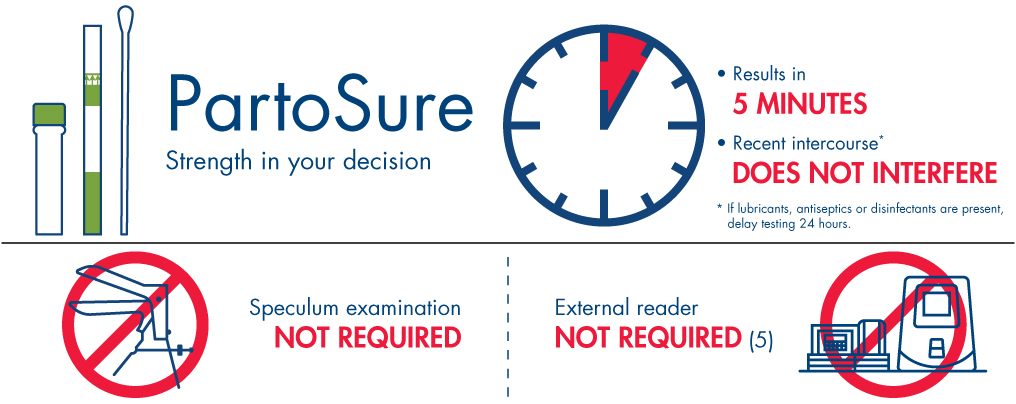Strength in your decision with PartoSure
A more accurate assessment to identify those truly at risk of preterm labor is needed

The PartoSure Test is a rapid, qualitative test for detecting the presence of placental alpha microglobulin 1 (PAMG-1) in cervicovaginal secretions in pregnant women with signs and symptoms of early preterm labor (6).
Simple steps, rapid results

Results in 5 minutes with our 4-step testing procedure (6)
Additional Material for Download:
Reducing unnecessary interventions may lead to decreased costs
Published studies suggest a lower rate of false positive test results and associated higher PPVs, such as those seen in the PartoSure Test, may contribute to:
• Decreasing unnecessary admissions and acute interventions
• Reducing the length of stay of high risk patients
• Minimizing unnecessary patient transfers
The average US birthing hospital has approximately 1,200 births annually and PTL tests may be used on up to 300 of these patients (7).
Up to 37 patients may avoid unnecessary intervention annually, which could result in savings of approximately $750K (5, 8).
PartoSure would produce 0 2 3 4 5 6 positives
False positives within this group: 0 2 3 4 5
Traditional biomarker tests may produce 0 11 18 26 38 44 positives
False positives within this group: 0 8 19 26 3442
References:
1. Grobman, W.A. et al. (2004) Am. J. Obstet Gynecol. 191, 235.
2. Sanchez-Ramos, L. et al. (2009) Obstet. Gynecol. 114, 631.
3. Ness, A. et al. (2007) Am. J. Obstet. Gynecol. 197, 426.e1.
4. Alfirevic Z. et al. (2007) Ultrasound Obstet. Gynecol. 29, 47.
5. Lucovnik, M. et al. (2013) Am. J. Obstet. Gynecol. 209, 217.e1.
6. PartoSure Test Instructions for Use. QIAGEN, 2018.
7. American Hospital Association (AHA). US Birthing Hospital Data, 2016.
8. Wing et al. (2017) Obstet Gynecol. 130, 1183-91.

 Download Brochure
Download Brochure